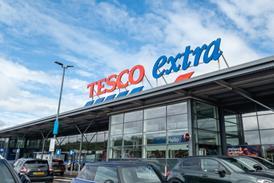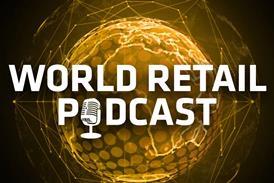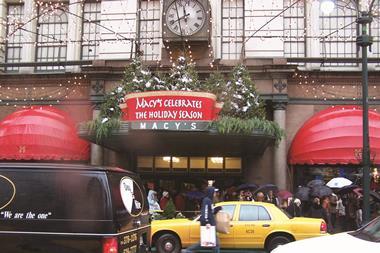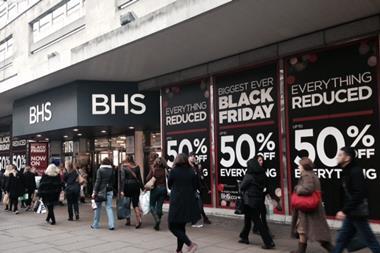Black Friday is a logical part of the US retail calendar, coinciding with Thanksgiving when people have both the time and inclination to shop.
On Sunday evening the I-95, the spine of the US East Coast that runs from Maine all the way down to Florida, was choked with traffic.
The glow of taillights looked like a red snake, winding its way to the horizon. Inside the vehicles, stereos were tuned to radio stations that pumped out Christmas classics in a seemingly endless loop.
As it was on Sunday, so it has been for many years. Thanksgiving is, if nothing else, a holiday built around tradition. While each family has its own variants and nuances – including the ongoing debate as to whether pumpkin, pecan or, heaven forbid, apple is the most traditional pie filling – the shape of these rituals has remained broadly similar down the generations. Yet one tradition has proved to be mutable – Black Friday.
Shifting dynamics
It used to be the case that the day was the definitive start of the holiday shopping season. A day when across the nation people flocked to main streets and malls, armed with sharp elbows employed ruthlessly in pursuit of the best bargains. It was a concentrated day of trade that delivered bumper sales and solid profits for retailers.
On the surface not much has changed – malls are still crowded; people still camp out for the early deals, known in American parlance as doorbusters; and still the occasional fight over a must-have product breaks out and captures the headlines. Yet behind this picture, the data points to significant developments in the underlying dynamics of the day and its consequent economic impact on retailers.
The most obvious is that as an individual day Black Friday is becoming less important. The day itself is still worth tens of billions to retailers but that spend is in decline. In 2013 Black Friday spend dropped by about 1.8%, last year the downturn accelerated falling by 9.6%, and this year Conlumino’s initial estimates suggest it fell by a further 4.7%.
“Spending once concentrated into one day is becoming more spread out, spilling into the days before and after Black Friday”
Neil Saunders
This doesn’t mean the US consumer is unwilling or unable to spend. Indeed, thanks to lower gas prices many households currently have sound finances and reasonable confidence. What it does indicate is that spending once concentrated into one day is becoming more spread out, spilling into the days before and after Black Friday. Factor in this and US holiday retail spending by the end of November should be up by about 2.9%.
Black Friday creep
The responsibility of this Black Friday creep is largely down to retailers, many of which have got into the habit of offering discounts earlier in the season and staying in discount for much longer after Thanksgiving. Arguably, this spreading of trade is sensible, not least because it reduces the immense pressure that servicing such an enormous volume of trade exerts on all aspects of a retail operation.
It’s not just when consumers shop that is changing, but where they do that shopping has also shifted – and that movement has been in favour of online. In 2010 just 2.8% of spending on Black Friday was done via the internet; this year it’s estimated to be 6.9%. While this still leaves the lion’s share going to physical stores, it does explain why many retailers have seen store sales drop and why Black Friday footfall is not what it used to be.
Shop til you shutdown
The fact that virtual stores are open 24/7 has lead to more people now shop on Thanksgiving Day itself, placing pressure on some retailers to open their physical doors in order to compete. The impact is telling. Five years ago spending made on Thanksgiving Day was only about 2.7% of all November retail; this year it is expected to be about 6.4%.
Part of the convenience of online shopping is that it makes price comparisons easy, in a way that would be difficult in physical stores. However, what’s helpful for shoppers is less advantageous for retailers as it means deals on comparable items or brands have to be particularly sharp in order to generate interest, something that has eroded margins over recent years. This is further exacerbated by the cost of fulfilment, often not fully paid for by consumers and therefore diminishing bottom lines.
What’s in a name?
As much as the pattern of Black Friday trade is shifting, the event itself is not under threat. Unlike their UK counterparts, there is little desire among US retailers to uninvent the occasion.
“Black Friday is an organic and logical part of the US retail calendar”
Neil Saunders
The reason is that Black Friday is an organic and logical part of the US retail calendar. It coincides with a genuine holiday when people have both the time and inclination to shop – and arguably need some incentive to do so after the expense of Thanksgiving. In a sense Black Friday is the US equivalent of UK Boxing Day Sales – a day that does not exist in the US.
As relevant as it may remain, the continued shift in trade means that the descriptor of the occasion has become far less meaningful. A more accurate, but arguably less punchy, name would be something like Black Week or The Holiday Sales. However, while the shifts will continue the Black Friday label is unlikely to change any time soon. After all, it’s an all-American holiday tradition.
- Neil Saunders is managing director of Conlumino
























No comments yet